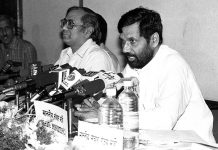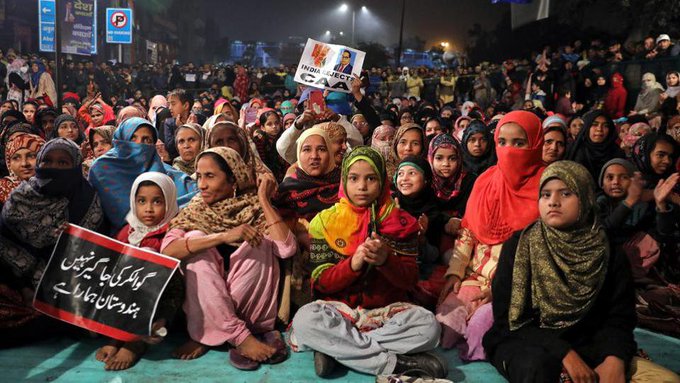Recently two sisters in Uttar Pradesh have been found raped, murdered and hanging from a tree. It is one of the latest incidents that once again raised the issue of increasing sexual violence in India. Both sisters aged 15 and 17 are belong to Dalit caste and found suspended from a tree near their home in Lakhimpur district. The incident clearly highlights as the increasing sexual violence in India is one of the biggest problems, it cannot be ignored According to National Crime Records Bureau (NCRB) as many as 65,025 rape cases were reported in 2021 in India. But, it is surprising that the accused were known to the victims in 96.8 per cent cases and around 87 cases are reported every day in across India. The data highlights as Rajasthan is on top position with 6,337 in the country followed by 2,947 in Madhya Pradesh and 2,845 in Uttar Pradesh. The report, in this case, shows that around 19.34 per cent rape cases have been increased in 2021 in compare to 2020.
Thus, the rapidly increasing cases of sexual violence against women are the serious issues that cannot be undermined. The issue of rape and sexual violence has been a biggest obstacle of Indian society and it is closely linked with several deep rooted problems. Therefore, to address the issue of rape, we have to seriously engage with society and its structural problems that never recognize the status of women equal to man. It is fact that the status of women has historically been determined by the deep- rooted patriarchal social relation. For that reason, the notion of patriarchy still influences our psychology and thinking process and it is only an obstacle that is responsible for the inferior or secondary status of women in India society.
Society normalizes the incident of rape
It cannot be denied that the incident of rape has been culturally connected with different institutions of our society. These all institutions such as family, religion, caste has always been defining not just women body but also women spaces, movement and the way of thinking. Here it is also fact that these all institutions have significant role in making sexually determined women’s identity. This identity has historically been constituted in favor of male’s superiority and it does not allow open and equal relation between male and female. In this case, B. R Ambedkar categorically highlights the role of caste in creating gender based inequality in the society. He believes that women in our society are worst sufferers of the oppressive, caste based and rigid hierarchical social system. Apart from this, Indian family system, which is hierarchical and rigid in nature, has always been anti women and it still promotes male domination as well as male chauvinism in across the society. UNICEF in their report clearly mentions that the male centric Indian society is one of the main problems that resulted highest rate of discrimination against women. Besides, another significant aspect of Indian society, in this case, is Hindu social order that on the one hand regulate women’s daily life but on the other hand always define women’s body as symbol of sexual pleasure through different social and cultural practices. These all tendencies of Hindu social order are male centric and reproduce substantial condition for discrimination and sexual violence in Indian society.
Capitalism create the condition of rape
Market has been a key driving force in capitalism; it always struggles in order to redefine the society and social structure. But here it is interesting to know that the market reproduce a specific condition that creates the climate for rape especially in four areas. The first is the degradation of human being into commodity to generate economic values. In the case of women, it treats women’s body as commodity to just sell and purchase in order to generate more and more economic values. The second area is economic exploitation of women in our society that promote inequality and function to maintain the oppression of women in the society. The third area is ethics and values that serve and cover the oppression of women and also maintain supremacy of male. And the fourth area is violence and brutality that is promoted in the society to just maintain inequality.
In contemporary society, these all areas of women repression are based on the representation of women’s body by the market forces. Women’s body, in this case, is the key source of exploitation and sexual violence. it has reconstituted the image of women as a symbol of sexual pleasure and psychologically affect the human mine in order to recreate the condition of rape and sexual violence against women.This tendency of the market has made the media as leading force in making women’s body as sexual object. It is fact that the content of media in today’s society is fully centered on sexual objectification of women’s body parts, identity and beauty in order to appeal larger population of the society. This condition has resulted on the one hand a condition sexual violence but on the other hand exaggerated the sexual desire among male too.
Government’s role is irresponsible
Indian government has introduced several schemes and development program which has specific objective to reduce the incident of rape and sexual violent. Besides many policies intervention is also going on in across the country and have key objective to address the question of rape and sexual violence. But an interesting thing is that no any policy and development programs has objective to challenge the deep- rooted patriarchal social relation and male chauvinism that still exist in our society. These all government interventions, in this case, have been politically motivated and never address the issue of rape and sexual violence genuinely due lack of will. However, there have been many movements which have raised this question aggressively and demanded for structural change in the society. But the government response to all these movement has been irresponsible. Nirbhaya gang rape was a very popular incident; it raised a serious question on government responses toward the question of rape and sexual violence. In this case, people from different sections of the society came together and demanded for structural change in the society. But the response from the government was contradictory and failed to address the question of rape as structural problems. Similarly Unnao gang rape has also challenged the deep rooted patriarchal social structure and state responses to the question of rape. It is fact that Unno gang rape incident has exposed the role government in rape incident that how much the Indian governments are serious about the question of rape and sexual violence?
Ompraakash Kushwaha teaches Journalism and Mass communication at Chandigarh University, Mohali, Punjab














